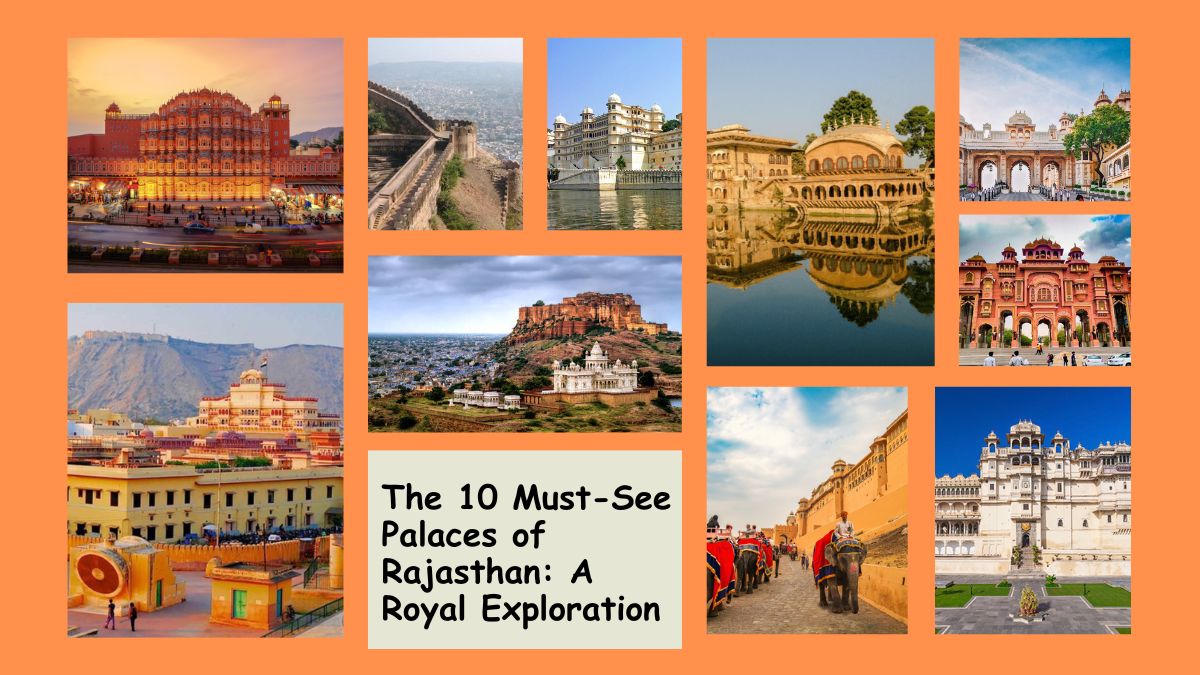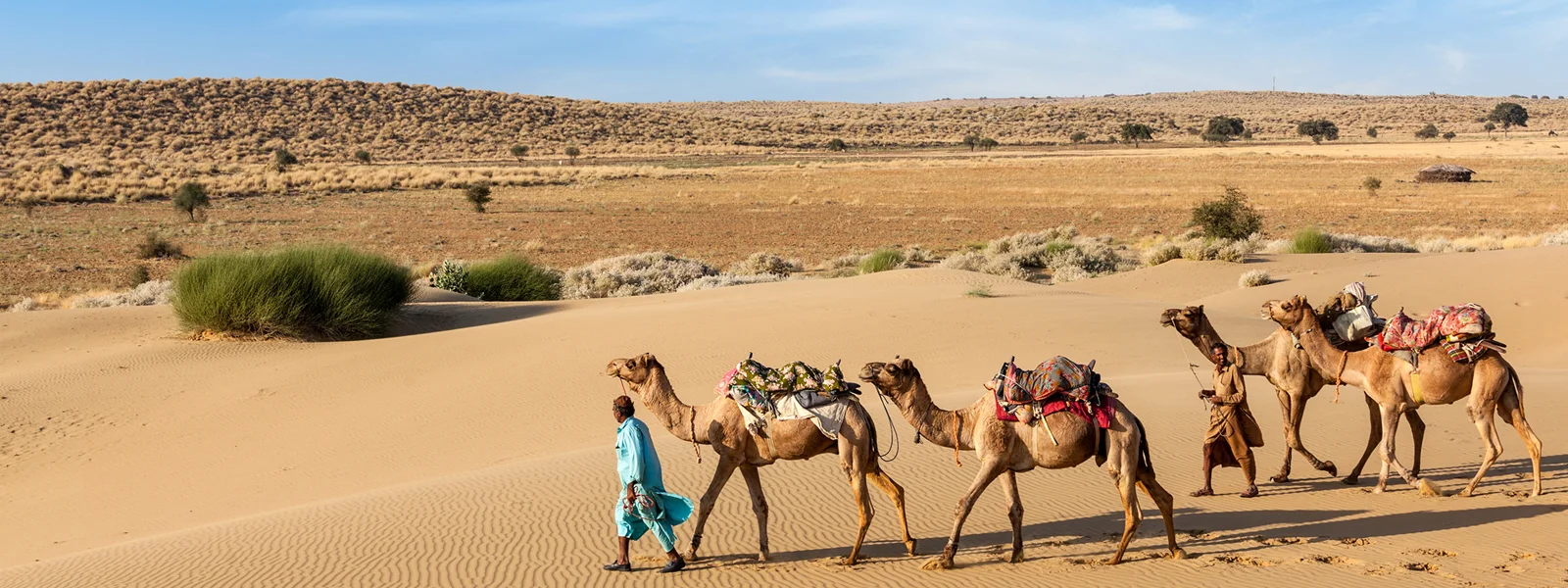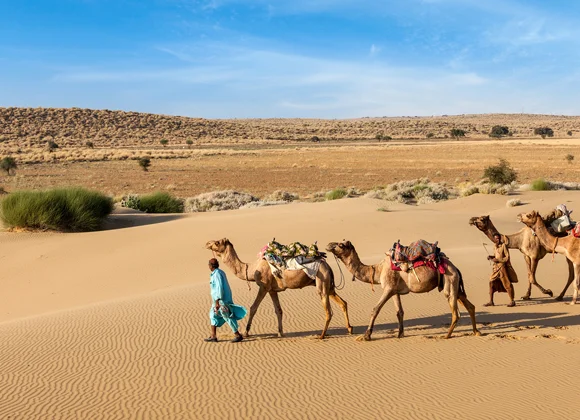The 10 Must-See Palaces of Rajasthan: A Royal Exploration
Introduction
Rajasthan, nicknamed the land of kings, is famous for its fascinating history filled with tales of bravery and romance. The region is dotted with majestic palaces and forts that bear witness to its rich past and the greatness of its maharajas. These structures are not simply buildings; they are time capsules that transport us to a world where art and architecture intertwine with history. In this article, we explore the ten most iconic palaces of Rajasthan, witnesses of royal grandeur not to be missed. miss on your next trip to India with Bonjour India Travel.
1. City Palace, Udaipur
The City Palace, fusing Rajput, Mughal, European and Chinese architectural styles, stands majestically on the banks of Lake Pichola. Its construction, begun by Maharana Udai Singh II in the 1550s, continued for almost 400 years. The palace is a labyrinth of courtyards, hanging gardens, pavilions and corridors, decorated with mirrors, marquetry, frescoes and colorful tiles. The Palace Museum, with its royal collections, and the panoramic view of Udaipur from the balconies are highlights of the visit.
2. Amber Fort, Jaipur
Built by Raja Man Singh I in 1592, Amber Fort is an architectural masterpiece located on a picturesque ridge. The ride to the fort on the back of an elephant offers an unforgettable royal experience. Inside, the fort contains the magnificent Palace of Mirrors (Sheesh Mahal), the Hall of Victories (Diwan-i-Aam) and the splendid Kesar Kyari Garden on Maota Lake. The delicate frescoes, inlaid mirrors and filigree carvings demonstrate the exquisite art and craftsmanship of the era.
3. Hawa Mahal, Jaipur
Built in 1799 by Maharaja Sawai Pratap Singh, the Hawa Mahal, or Palace of the Winds, is a five-story pyramid structure made of pink and red sandstone, crowned with minarets and domes. Designed to allow the ladies of the royal court to discreetly observe street life, this palace is a sight to behold, particularly at sunrise when it lights up with a golden glow.
4. Mehrangarh Fort, Jodhpur
Perched on a rocky promontory 125 meters above the city of Jodhpur, Mehrangarh Fort is one of the most imposing and best preserved fortresses in India. Founded by Rao Jodha in 1459, the fort houses several ornately decorated palaces, such as the Phool Mahal and the Sheesh Mahal, collections of armor and palanquins. The views from the ramparts over the blue city below are breathtaking.

5. Umaid Bhawan Palace, Jodhpur
Umaid Bhawan Palace, completed in 1944, is a remarkable blend of Eastern and Western architecture. Built with yellow sandstone and marble, the palace serves as the residence of the Jodhpur royal family, as well as housing a luxury hotel and a museum. The museum displays a fascinating collection of vintage watches, photographs and classic cars, offering an insight into royal life.
6. City Palace, Jaipur
The City Palace of Jaipur, erected by Maharaja Sawai Jai Singh II in 1727, is a magnificent palace complex that occupies one-seventh of the walled city. It incorporates an impressive fusion of Rajput and Mughal architecture, with European additions. The palace includes the Chandra Mahal and the Mubarak Mahal, as well as several interior courtyards, museums and art galleries, offering a rich testimony to the greatness of the maharajas of Jaipur.
7. Jal Mahal, Jaipur
The Jal Mahal, or Water Palace, is a magical vision floating in the middle of Man Sagar Lake. Built in the 18th century by Maharaja Madho Singh I as a hunting lodge, this five-story palace, with four submerged floors, is a remarkable example of Rajput architecture. Although the interior is not accessible to the public, the view of the palace from the riverbank is spectacular, especially at night when the palace is illuminated.
8. Lake Palace, Udaipur
The Lake Palace, formerly known as Jag Niwas, is located on an island in Lake Pichola. Built in 1746 by Maharana Jagat Singh II, this royal summer palace-turned-luxury hotel is acclaimed for its stunning architecture and romantic seclusion. Made entirely of white marble, with courtyards, gardens and fountains, it offers a peaceful escape with splendid views of the Aravalli Mountains and the City Palace.
9. Junagarh Fort, Bikaner
Junagarh Fort, founded in 1589 by Raja Rai Singh, is a fortified complex that was never conquered. Its palaces, such as the Chandra Mahal and the Phool Mahal, are decorated with delicate paintings, inlaid mirrors and finely carved woodwork. The fort museum houses an impressive collection of weapons, royal costumes and jewelry.
10. Lalgarh Palace, Bikaner
Lalgarh Palace, built in 1902 for Maharaja Ganga Singh, is a work of art of Indo-Sarracenic architecture. Designed by Sir Samuel Swinton Jacob, the palace blends Rajput style with European influences, providing a magnificent spectacle with its landscaped gardens, libraries and ballrooms. Part of the palace now functions as a luxury hotel, allowing visitors to live like royalty.
Conclusion
Rajasthan is a living history book, where every stone and wall tells of centuries of royalty, art and battles. Visiting these palaces is not just a trip into the past; it is a dive into the splendor and grandeur of royal India. For those looking to have a truly majestic experience, Bonjour India Travel offers tailor-made tours that will have you walking in the footsteps of kings. Discover Rajasthan in all its glory, a kingdom where history meets luxury.

